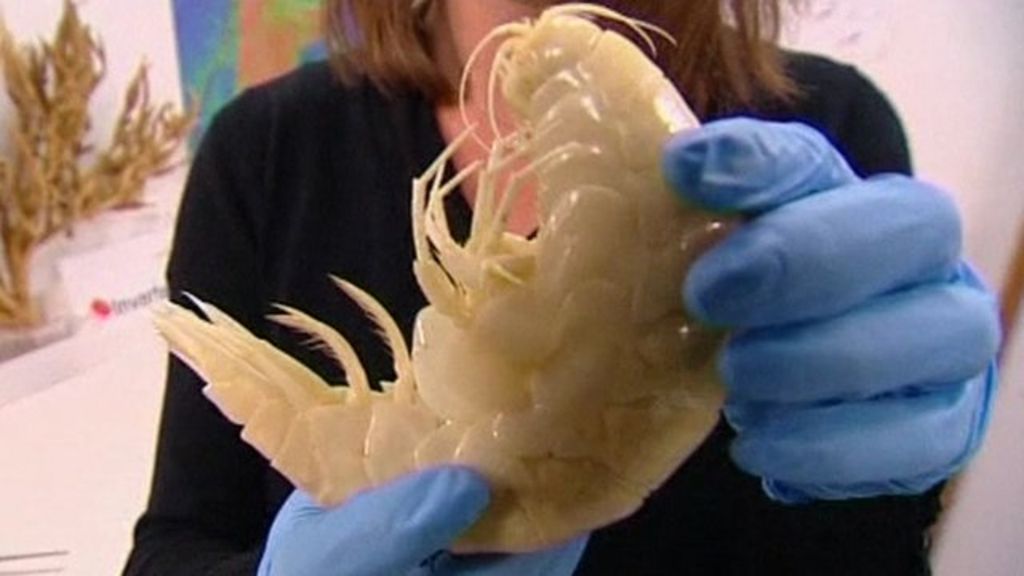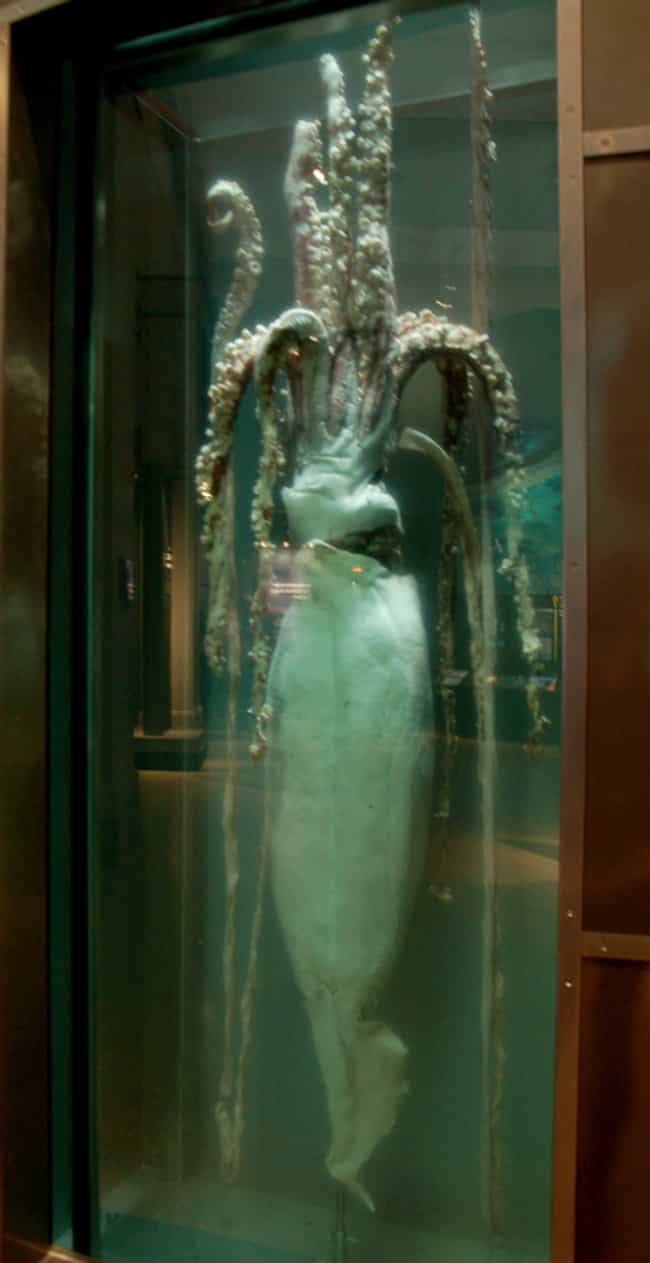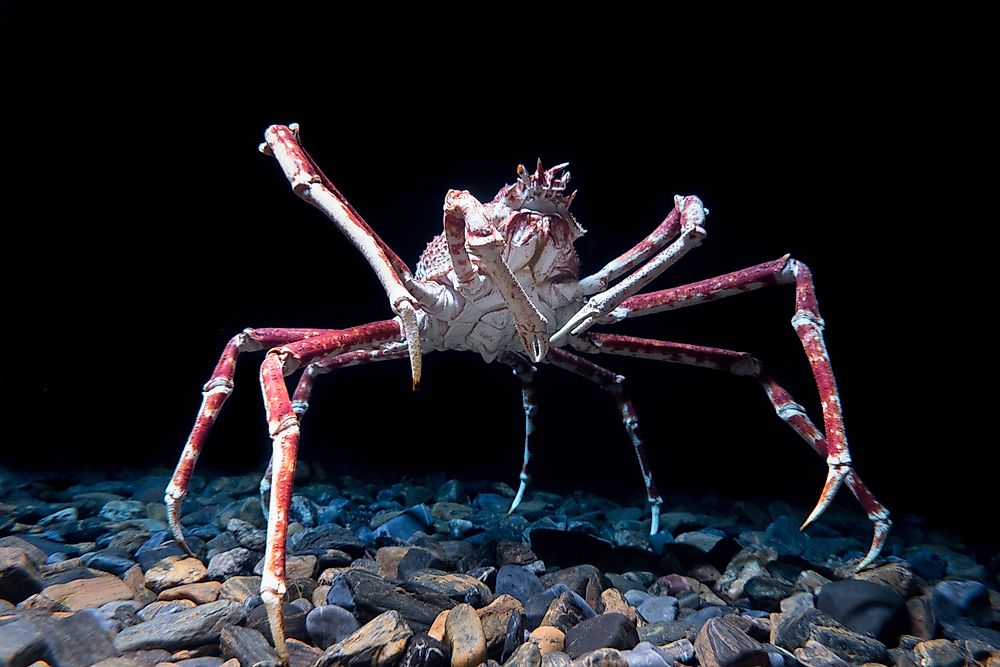
The giant squid is a deepocean dwelling squid in the family Architeuthidae. Giant squid can
Sign up to Morning Brew for free today!: https://morningbrewdaily.com/realscienceWatch this video ad-free on Nebula: https://nebula.tv/videos/realscience-why.

'Supergiant' crustacean found in deepest ocean BBC News
Deep sea gigantism (or abyssal gigantism) is the tendency for deep-sea animals, mostly invertebrates, to grow to much larger sizes than their shallow-water relatives. But what causes.

DeepSea Gigantism. Why the Ocean Breeds Monsters
It occurs in the deep sea as well, aptly named deep-sea gigantism there, according to Amy Moran, Ph.D., of the University of Hawaii, who along with Woods, studies these species. "Different groups.

Deep Sea Gigantism Why Are Deep Water Marine Animals Larger In Size?
In so-called deep-sea gigantism, or abyssal gigantism, scientists have discovered abnormally large organisms living peacefully at depths of anywhere from 1,000 to 36,000 feet.

Deepsea Gigantism and other Abyssal Phenomena Cnidology Tonight
June 3, 2023 Deep sea (abyssal) gigantism demonstrates the role of natural selection in driving evolution and survival, particularly in an environment characterised by challenging conditions and limited resources. Evolution tends towards the most effective adaptations to grant animals the best chances of survival.

Deep Sea Gigantism Explained YouTube
The answer is Deep Sea Gigantism. Giant Isopod (left), Deep sea squids (right) (Photo Credit: NOAA/Wikimedia Commons & Flickr) Also Read: Why Are Marine Mammals, Like Whales, Larger Than Land Mammals? Deep Sea Gigantism The deeper down below the ocean waves you go, the weirder things get.

Deep Sea Gigantism Natural World Facts
In the deepest and coldest parts of the ocean, sea creatures — mainly invertebrates, or animals without backbones — can reach gargantuan proportions. Squids, sea spiders, worms and a variety of.

Deep Sea Gigantism Natural World Facts
In zoology, deep-sea gigantism or abyssal gigantism is the tendency for species of invertebrates and other deep-sea dwelling animals to be larger than their shallower-water relatives across a large taxonomic range.

16 Horrifying Examples Of Abyssal Gigantism (Photos)
Deep-sea gigantism focuses on the vertical changes in one region instead of the earth's latitude difference (Mahaffey et al. 2020).When it comes to higher Ocean latitude in one single area, dissolved Oxygen and Oxygen availability increases, being one of the reasons that cause deep-sea gigantism.

Deepsea gigantism Wikipedia
In zoology, deep-sea gigantism or abyssal gigantism is the tendency for species of invertebrates and other deep-sea dwelling animals to be larger than their shallower-water relatives across a large taxonomic range. Proposed explanations for this type of gigantism include colder temperature, food scarcity, reduced predation pressure and increased dissolved oxygen concentrations in the deep sea.

Giant Isopod A Prime Example of the Gigantism found in the Deep Sea r/deepseacreatures
The enormous size of giant isopods is a result of a phenomenon known as deep sea gigantism or abyssal gigantism, the tendency of deep sea animals to grow to a much larger size than similar species in shallower waters. One of our giant isopods in its benthic habitat. Credit: Perry Hampton, Aquarium of Pacific

A new explanation for deepsea gigantism ScienceChronicle
Deep Sea November 5, 2021 If you have ever heard stories of deep sea monsters like the Kraken you have already been exposed to today's concept, deep sea gigantism! Gigantism is a phenomenon used to describe the visible size difference in organisms found in some of the more remote places on earth, like the deep sea or marine polar environments.

What is Deep Sea Gigantism? C.S.W.D
Deep sea-gigantism is defined as the tendency of the sea creatures such as the invertebrates, vertebrates and all the other sea creatures to be larger in deep-sea waters while those creatures that exist in the shallow waters tend to be smaller.

Deep Sea Gigantism Why Are Deep Sea Animals So Big? / Documentary YouTube
Giant isopods express deep-sea gigantism, reaching in excess of 30 centimetres. There are a number of theories on why they might have become larger. Giant isopods were first discovered in 1879 by French zoologist Alphonse Milne-Edwards in the Gulf of Mexico. This illustration was published in Milne-Edward and E L Bouvier's 1902 volume, Les.

Deep Sea Gigantism YouTube
Deep Sea Gigantism (abyssal gigantism) is defined as the the tendency for deep-sea animals to grow to much larger sizes than their shallow water relatives.Wa.

What Is DeepSea Gigantism?
We often hear the news that the remains of giant deep-sea creatures were washed ashore after another storm again. Some of them are new even for scientists. A.